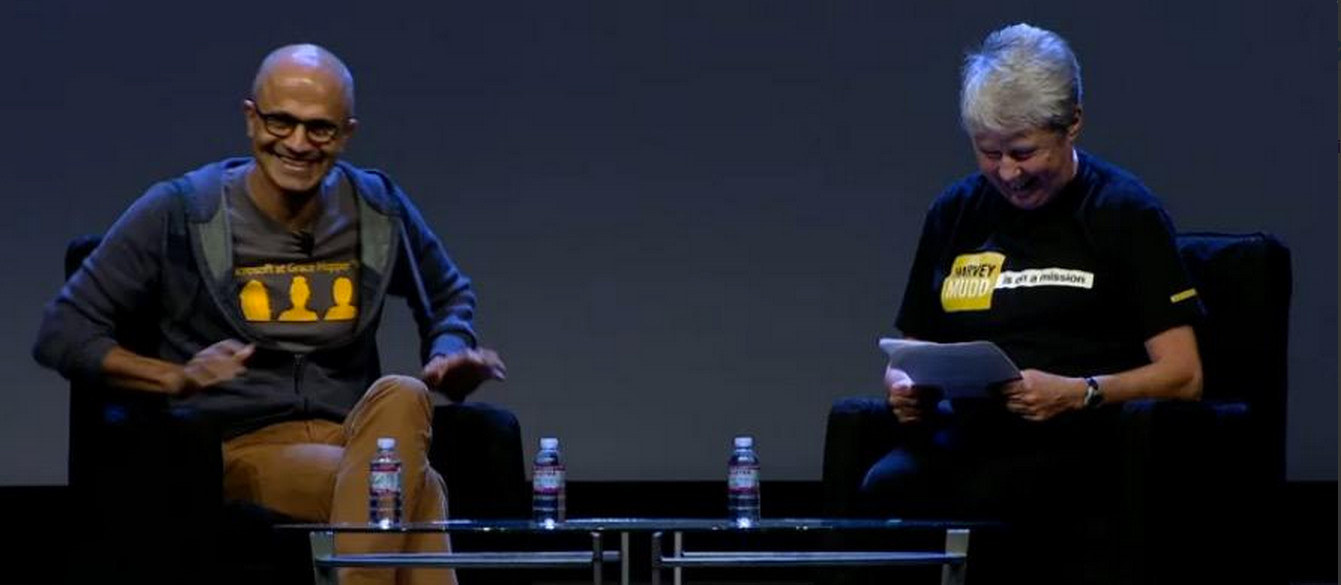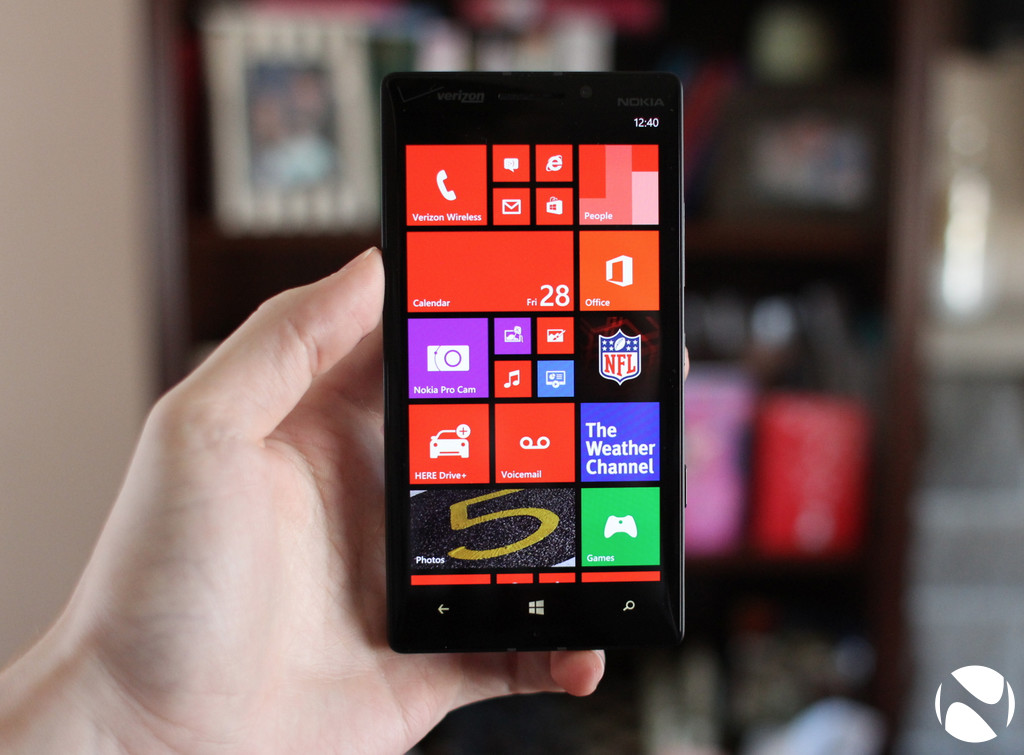7 Days is a weekly round-up of the Editors' picks of what's been happening in the world of technology - written with a dash of humor, a hint of exasperation, and an endless supply of (Irish) coffee.
After all the excitement of new iPhones and the Windows 10 unveiling in recent weeks, you might have been expecting this past week to be a bit quieter. But it’s been another seven days packed full of official announcements and intriguing revelations, with a bit of controversy and outrage thrown into the mix for good measure.

Last Sunday, reports began to emerge indicating that HP was planning to split itself into two separate companies. A day later, HP confirmed the news, announcing that the split will separate the organization into consumer- and enterprise-focused entities.

There was good news for Skype users on Mac and Windows, as Microsoft rolled out version 7.0 for the Apple OS, along with a preview release of a new version of its desktop client for Windows. The update brings with it a new-look UI that moves it a bit closer to Microsoft’s ‘Modern’ design language.

Xbox One owners can look forward to new design elements in the future too, as Microsoft’s Phil Spencer confirmed that the company is bringing themes and custom background images to its console. The ability to capture screenshots is also on the way, but it’s not yet clear when these enhancements will make it to users.
These all seem like things that really should have been available on the Xbox One from the start, but hey, at least they’re coming soon…ish.

Microsoft has been busy exploring new ways to make gaming experiences more immersive, and it showed off some of its most recent efforts this week. Building on some of the knowledge gained from its IllumiRoom experiments, Microsoft Research has developed RoomAlive, which uses projectors to extend a gaming environment – or any other scene or landscape – into a room, using the company’s Kinect sensor to track a user’s movements, adapting the projections based on their position and actions.
Think of it as a poor man's holodeck.
Microsoft Research has also released a new mobile app called Xim, which allows you to share photos with anyone, without requiring them to have the same app installed. The app has been created for Windows Phone, iOS and Android and is available to download free.

Microsoft sent out invitations this week to a media event in San Francisco on October 20, at which it will share details on its progress and plans related to its cloud services and tools. The event will be hosted by the company’s Executive Vice President for Cloud and Enterprise, Scott Guthrie, and by its CEO, Satya Nadella.

It’s not been a great week for Nadella. He made comments in response to a question regarding pay levels for women in the workplace, saying that it was not “good karma” for them to ask for a raise, and that they should ‘have faith’ in the system to give them what they deserve.
Nadella quickly moved to clarify his remarks, and later said that he had "answered that question completely wrong" in a blog post in which he elaborated further on his position that the tech industry must do more to close the gender pay-gap. Nonetheless, as you can probably appreciate, there’s been plenty of uproar and outrage over his remarks.

Separate from this faux pas, Nadella also wrote a blog post this week reaffirming the company’s commitment to its Surface line of tablets. In it, he also gave implicit confirmation that a new Surface Pro tablet is on Microsoft’s roadmap – interesting information, in light of recent speculation that MS might update the Surface Pro 3 with new Intel Broadwell chips.

There were also fresh rumors this week that Microsoft is planning to launch a new Surface 3 – a new thinner and more powerful version of its Windows RT tablet – ahead of the all-important holiday shopping season. This gels with information from our own sources, which we reported earlier this year. However, the same new report claims that the Surface mini will also go on sale this year – and that doesn’t quite correspond to what we’ve been hearing. Still, time will tell.
_story.jpg)
This week, Vaio showed off its first tablet since the product line was spun off into a separate company from Sony earlier this year. The new ‘Vaio Prototype’ is, as its name suggests, a concept only for now, but it shows that the company is still working on new ideas, having launched a couple of new laptops back in July.
The device is a 12.3-inch slate with a retractable stand, featuring a 3:2 2560x1704px display, stylus and standalone keyboard. A version of the table is expected to eventually go on sale for around $1800.

To no great surprise, Apple has now sent out invites to a press event on October 16. The company had been widely expected to schedule an event on precisely that day, where new iPads, and possibly some new Macs, should be announced.

There was good news over in the UK this week, as the BBC announced that it has extended the availability of content on its iPlayer service. Previously a seven-day catch-up service, BBC iPlayer now allows users to watch and listen to TV and radio content on demand for up to thirty days after broadcast, and some shows will be available for even longer.

LG revealed on Tuesday that its new round smartwatch, the G Watch R, will go on sale next week in South Korea. With a 1.3-inch 320px-diameter display, the device also features a 1.2GHz Qualcomm Snapdragon 400 processor, 512MB RAM, 410mAh battery and weighs just 62g, and will be priced around $299.

That’s more expensive than Motorola’s not-quite-round smartwatch, the Moto 360, which we reviewed earlier this week, and which is on sale now for around $250.
Be sure to read the other reviews that we published this week, of the Turtle Beach Ear Force Z60 headphones and Zowie FK1 gaming mouse. We also put Microsoft’s new Wireless Display Adapter to the test, so don’t forget to check out our hands-on experience with the new dongle.

It looks like yet another addition will soon be made to the Windows Phone family, as it emerged this week that Russian brand Highscreen is preparing to launch its first handset with Microsoft’s mobile OS. Like many of the numerous other brands that have joined the platform in recent months, Highscreen’s début device is expected to be positioned at the entry-level, priced at around $100.

While Microsoft’s flagship Lumia 930 Windows Phone continues to roll out to new markets, its near-identical American sibling, the Lumia Icon, may be nearing the end of the road. The Icon was launched exclusively on Verizon in February, months before the 930 eventually went on sale as the ‘international’ version of the same handset – but a recent report indicates that Verizon has now ‘retired’ the Icon from its product range.

The Icon and 930 were among the last devices developed by Nokia before the sale of its devices business to Microsoft was completed earlier this year. Nokia’s former CEO, Stephen Elop, has often been accused of being a ‘Trojan horse’ at the company, having joined from his previous role at Microsoft. Six months after he became its chief executive, Elop announced that Nokia was joining Windows Phone, and after subsequent years of struggling to gain market share, the deal to sell to Microsoft was finalised.
But a new book, written by two Finnish business journalists, claimed this week that Elop was not a Trojan horse after all, but that he was simply “one of the world’s worst CEOs”. In fact, it seems like the book portrays him as a bit of a blundering, but well-meaning, fool who did his best to manage Nokia but ultimately failed to turn things around.

Before he left to join Nokia, Elop was in charge of the Microsoft Business Division, where his responsibilities included managing the Office suite. Earlier this week, Microsoft began sending invites out to users that have signed up to the Office Pre-Release Program, as it prepares to make preview versions of future Office apps and services available to those wanting to test them ahead of their general release.
The emails that Microsoft sent out referred to new versions of Office for both Windows and Windows Phone.

Meanwhile, the Windows 10 Technical Preview remains in the hands of users around the world, who are continuing to explore what it offers, and to dig around for clues as to what other secrets it might be holding.
The Notifications Center, for example, has now been enabled – albeit in a very limited capacity – and a similar predictive text system to the one found on Windows Phone has also been spotted in Windows 10.
We end our look back at the last seven days on another scandal to hit Apple’s new iPhones. After the disastrous rollout of iOS 8.0.1 (which crippled connectivity on the iPhone 6 and 6 Plus), and that whole bendy iPhones thing, comes ‘Hairgate’. Users have been complaining that the seams in the handsets’ bodywork are catching their hairs and pulling them out.
Thankfully, no-one’s taking this issue too seriously – although given that it particularly affects facial hair, there could be a few upset hipsters out there.
Image credits: 1) HP; 2, 4, 5) Microsoft; 9) Vaio; 10) TechCrunch; 12) YouTube; 14) Lenta.ru; 16) Geeky Gadgets


















5 Comments - Add comment